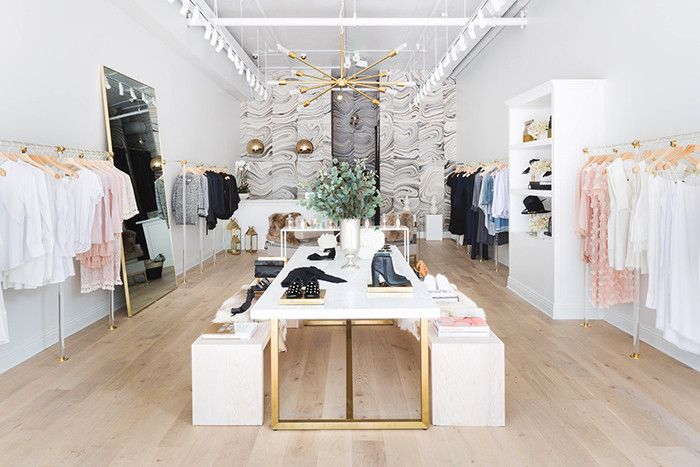Exploring the World of Lasting Boutique Fashion Brands
Exploring the World of Lasting Boutique Fashion Brands
Blog Article
Exploring the Advancement and Impact of Clothes on Modern Fashion Trends
The development of apparel has actually substantially affected contemporary style trends, merging historical criteria with innovative developments. Iconic numbers like Coco Chanel and Yves Saint Laurent changed the style industry by introducing ideas that prioritize comfort and accessibility, which continue to resonate today.
Historic Style Influencers
In the tapestry of style background, particular figures have left an enduring mark, forming the fads and styles that define entire ages. Coco Chanel, a cutting edge developer, redefined ladies's style by introducing comfy, stylish apparel that departed from restrictive bodices. Her renowned Chanel match and little black outfit have actually ended up being timeless staples in wardrobes worldwide. Likewise, Christian Dior's post-war "New Look" in 1947, with its party of femininity via full skirts and cinched waistlines, noted a return to luxury and has actually proceeded to influence developers.
Elsa Schiaparelli is one more pivotal number, renowned for her progressive styles that included surrealist art, teaming up with Salvador Dalí to create whimsical pieces that tested standard appearances. Her ingenious use color and vibrant patterns reverberates in modern style. Yves Saint Laurent, meanwhile, equalized haute couture with prêt-à-porter collections, bringing runway designs to the masses and establishing a precedent for modern ready-to-wear lines.
These enthusiasts, to name a few, not just reinvented style in their times however likewise established sustaining trends that resonate in today's garment industry, giving a structure whereupon contemporary designers proceed to develop and innovate. Their legacies underscore the significance of imagination and bold in fashion's ever-evolving story.
Technical Improvements in vogue
In the middle of the dynamic landscape of the fashion industry, technological advancements stand at the center of technology, improving just how developers create and consumers engage with style. The integration of 3D printing has actually changed design processes, making it possible for developers to explore complicated frameworks and lasting materials that were previously unthinkable. This innovation facilitates fast prototyping, lowering waste and quickening manufacturing times.

Smart textiles, embedding innovation into textiles, are likewise changing the sector. Developments like self-cleaning and temperature-regulating fabrics offer boosted capability and comfort. Wearable technology, incorporating attributes like health and fitness tracking and communication, includes a new dimension to style, merging looks with usefulness.
Cultural Shifts and Design
As technical advancements remain to reshape the fashion business, cultural shifts are similarly significant, redefining style and consumer preferences. In recent times, the increase of social media platforms has sped up the circulation of international style trends, permitting diverse cultural influences to coexist and assemble. This electronic interconnectivity has promoted the quick exchange of ideas, bring about a much more eclectic and comprehensive analysis of style that mirrors the diverse nature of modern society.
Cultural understanding and appreciation have triggered designers to draw motivation from a more comprehensive spectrum of historical and ethnic contexts, integrating standard motifs with modern appearances. This blend has resulted in style that resonates with a larger audience, advertising a sense of identification and belonging across different demographics. Furthermore, the boosting demand for customization has driven brands to supply customizable options, allowing customers to express uniqueness while mirroring their cultural heritage.
Moreover, changing societal values have Discover More influenced style, with inclusivity and variety becoming main themes. The sector has actually begun to accept designs and influencers of different body kinds, ethnic backgrounds, and gender identities, difficult conventional appeal standards. This transformation underscores the power of social shifts fit the future of fashion, as design comes to be an extra authentic expression of personal and collective identification.
Sustainability and Modern Layout
While the fashion industry continues to progress, the important for sustainability has actually become progressively immediate, affecting contemporary layout methods. The increase of slow-moving style, which highlights quality over quantity, encourages consumers to invest in timeless pieces instead than short-term fads.
In addition, modern style is characterized by its innovation in minimizing waste and promoting circularity. This technique not only minimizes ecological impact however also enhances the social responsibility of style homes.

Future Trends in Style

Sustainability will certainly remain to be a driving force in forming future fashion trends. The industry is increasingly taking on environment-friendly products and ethical manufacturing techniques, reacting to a growing customer need for accountable methods. Innovations such as bio-fabricated materials and closed-loop recycling systems are readied to redefine exactly how apparel is created and taken in, decreasing environmental influence while maintaining design and quality.
Cultural changes, including the rise of inclusivity and diversity, will also play a crucial role. As society becomes much more knowledgeable about social concerns, fashion is anticipated to come to be a system for expression and change. Developers will likely concentrate on producing collections that show a more comprehensive array of experiences and identities, championing depiction and ease of access.
Verdict
The advancement of garments substantially affects modern-day fashion fads, where historic impacts combine with modern styles. Trick numbers like Coco Chanel and Yves Saint Laurent have actually redefined design, while technical developments such as 3D printing and clever fabrics expand imaginative opportunities. Social changes towards inclusivity and sustainability urge brand names to adopt honest practices and embrace diversity. This ongoing evolution emphasizes fashion's role as a mirror to societal values and technical advancement, suggesting a future abundant with development and inclusivity.
The development of apparel has significantly influenced modern fashion trends, merging historical precedents with sophisticated innovations.In the middle of the vibrant landscape of the style sector, technological innovations stand at the center of advancement, improving just how developers create and customers involve with style.While the style industry continues to develop, the vital for sustainability has actually come to be significantly urgent, affecting modern-day layout methods. As sustainability becomes ingrained in modern-day layout, it leads the means for a more conscious and liable style news market.
The development of garments considerably affects contemporary style fads, where historical influences combine with modern styles.
Report this page